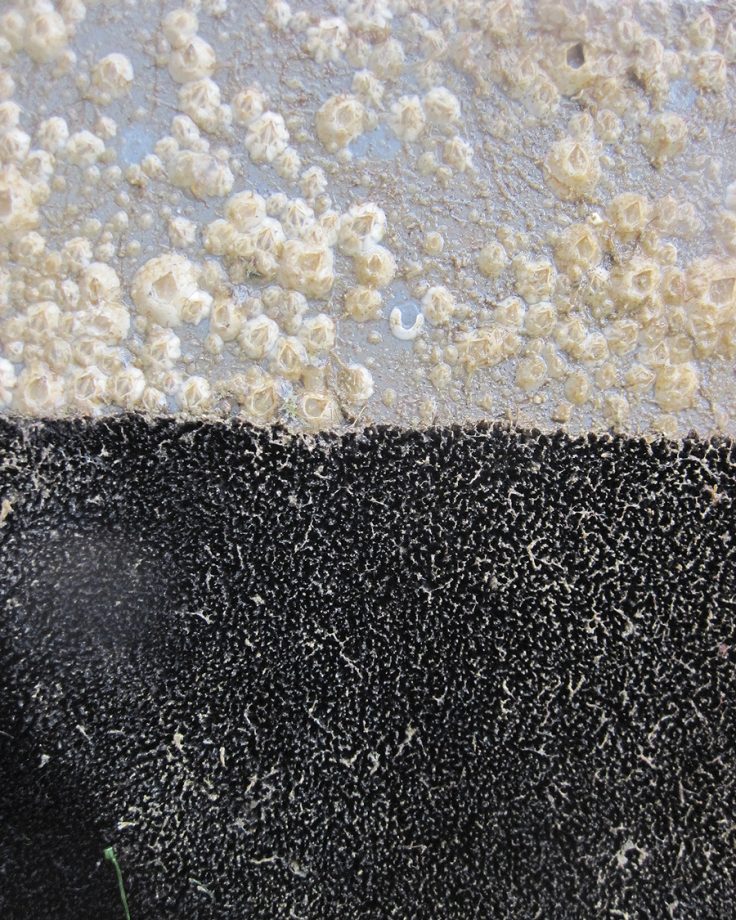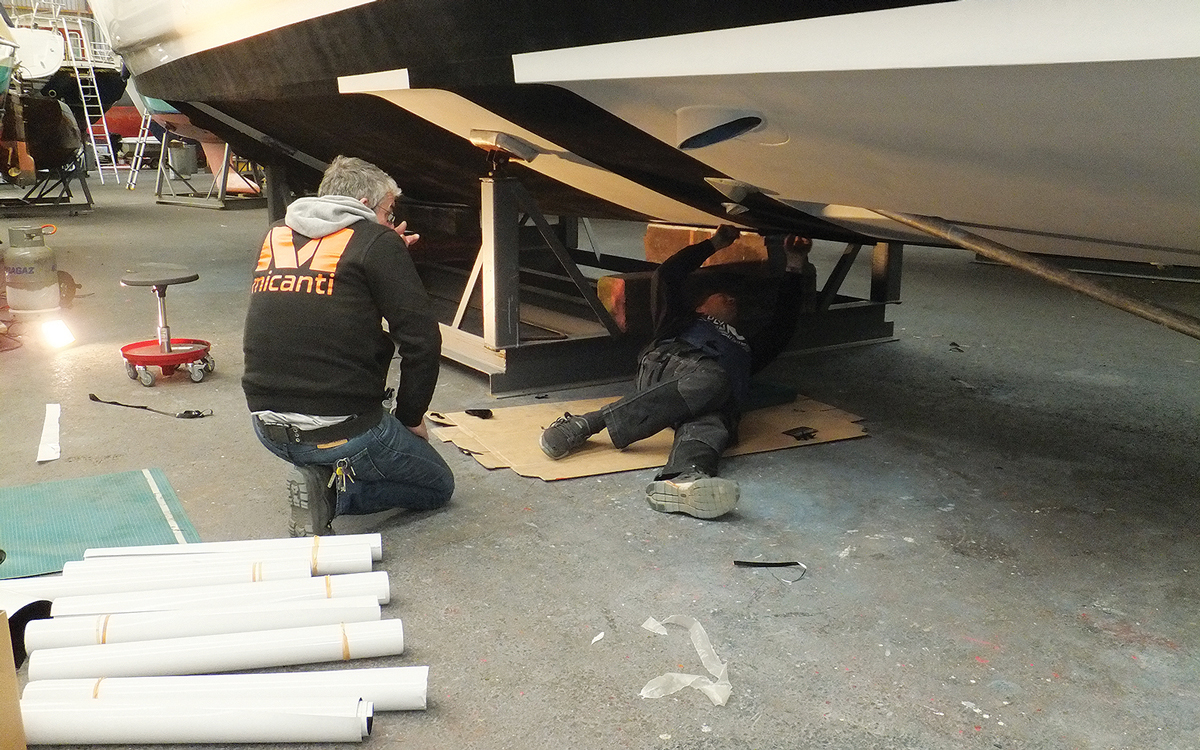Dutch inventor Rik Breur’s eco-friendly, prickly antifouling Finsulate mimics a sea urchin to keep barnacles at bay
Boat owners looking for an effective, eco-friendly antifouling may soon be wrapping their boats in a layer of prickly bristles thanks to the unlikely discovery of a Dutch materials scientist.
Rik Breur has a PhD in corrosion and biofouling from the Delft University of Technology but it was his hobby as an amateur scuba diver that inspired him to develop Finsulate – a new type of antifouling that relies on physics rather than chemicals to deter unwanted growth.
Intrigued by the way the smooth shells of crabs got covered in barnacles whereas the spiny shells of sea urchins stayed clear, he decided to mimic the prickly creatures’ natural defence mechanism.
The solution he came up with uses a special polyester film covered in thousands of stiff, spiny nylon bristles. When applied to the underwater sections of a boat using a water-based adhesive (in much the same way as coloured vinyl wraps are applied to the topsides), this tougher Finsulate film uses its physical properties to keep fouling at bay.
It works by interrupting the lifecycle of both hard and soft fouling. Growth occurs when barnacle larvae or algae spores are released into the water by their adult life forms.
These microrganisms float freely in the water until they find a hard surface to attach themselves to. A GRP or metal hull provides an ideal stable surface with just enough minor surface imperfections for the larvae to create a secure bond with it.
Article continues below…

Hempel Silic One: Is this the future of antifouling?

VIDEO: How to… Antifoul your boat
Allow Nick Burnham to take you through a step-by-step guide of how to antifoul your boat
However, when one of these microrganisms encounters the prickly nylon spikes of the Finsulate wrap, the movement of the fibres presents an unstable surface and the larvae floats off in search of something with better holding.
Breur claims this is not only a more environmentally sustainable solution than conventional antifouling paints, which gradually leach biocides (usually copper compounds) into the water, but also a longer-lasting, more effective one. Once applied, Finsulate should last for around five years with only minimal maintenance.
Furthermore, because he claims it works just as well when the boat is stationary as it does underway, it should prove more-effective than both soft and hard antifouling paints, which rely on the movement of water past the hull to gradually remove the expired paint and reveal a fresh layer beneath. Even silicone-based fouling release coatings need an occasional blast of speed to wash off immature growth before it gets a firm grip.
After extensive testing Breur found that the most effective length of the bristles was 3mm and that when applied to displacement hull forms it had almost no effect on boat speed or fuel efficiency.
This is because the increase in friction drag is offset by a decrease in form drag. However, when applied to faster planing hull shapes the 3mm long bristles did cause a near 20 per cent loss in top speed.
To counter this he also offers a Speedwrap version using shorter 1mm bristles with a velvet-like texture. When tested on a Sealine T51 this caused a minimal loss of around 0.5 knots from its original top speed of 30.5 knots but proved just as effective at deterring barnacles and only slightly less effective at preventing slime.
Both versions are said to work equally well in salt or fresh water and on all hull materials except wood (the film causes the planks to dry out) but like all antifoulings their efficacy will vary according to location and water temperature.
Breur admits that in really aggressive fouling areas, such as parts of the Mediterranean and the Tropics, some cleaning may still be necessary to prevent a build-up of growth, particularly around the waterline.
However, he claims that the cleaning process is much easier due to the combination of a tough polyester film and the soft bristles, which makes it difficult for the fouling to adhere to.
Unlike some silicone-based products, Finsulate can withstand brushing, scraping, scrubbing with Scotchbrite pads and even pressure washers of up to 200bar. Minor damage caused by lifting strops or trailer use can be patched up with a DIY kit.
The application process requires old layers of antifouling to be stripped off and an epoxy coating applied to create a smooth surface for the film. Once prepared, he estimates the total cost of applying Finsulate to a typical 40ft boat to be around €3,000.
Any good vinyl wrapping company should be capable of applying it. Removal is done by steam cleaning to soften the adhesive then scraping away the old film. At present Finsulate doesn’t have an official UK distributor but Indigo Graphics on the Isle of Wight has applied it to a 9m pilot boat.
Having already won the prize for SME Inventor of the Year from the European Patent Office as well as product of the year at the 2018 HISWA Amsterdam Boat Show, we look forward to seeing if Breur’s prickly idea takes root.
First published in the October 2019 edition of Motor Boat & Yachting.

Finsulate can be used on both fresh and salt water-based boats

Some large commercial ships have also started using Finsulate














